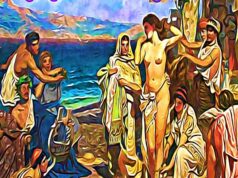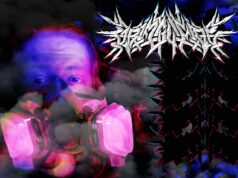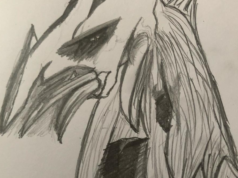When you woke up this morning what was your first thought? Did you wonder what you were going to have for breakfast, decide on a few errands or wonder what you’re going to wear to university or work? It’s unlikely that it was ‘will the checkpoints be open today so that I can get to work’, or ‘Is my school now a bomb site?’ For many young people in the UK we have a certain degree of freedom that we often take for granted. When we rise each day we are comforted by the knowledge that once we leave our homes we can pretty much venture where we please. Freedom in the UK is often an afterthought. Seventy-five percent of the population of Gaza are under the age of 25 and are forced daily to seek access to basic human rights.

The history
From 1917 to 1948 Britain ruled over Palestine. On 14 May 1948, the agreement came to an end and the declaration of the formation of the State of Israel was announced. This agreement caused such outrage that war broke out between Israeli forces and Arab armies. By the end of the war, Israel controlled 77.4% of the land, resulting in Palestine being fragmented leaving its people to become a nation of displaced refugees. The UN estimates there are 726,000 Palestinian refugees located outside the armistice lines with 32,000 inside.
Unlike Israel, only 100 countries in the international community recognise Palestine as a state, this unfortunately does not include the United States, despite their efforts to achieve a two-state solution.
Gaza was captured by Israel in the Six-Day War in 1967, but in 1993 the city was transferred to the Palestinian National Authority. Hamas took over the city in 2007 after months of clashes with its rival Fatah. Since then Gaza has been under a blockade by Egypt and Israel.
December 24th, 2008 saw the return of war to the lands as Israel began a siege on Gaza. Over the course of 22 days the extent of the devastation was so severe that Palestine’s entire infrastructure was reduced to a pile of rubble resulting in a shortage of basic essentials like clean drinking water, shelter, food and clothing. A ceasefire had been maintained by both sides up until that point, but the already oppressed people of Gaza now entered a surreal reality.
For the first time footage showed bombs falling from the skies, engulfed by flames littering the landscape with a highly volatile substance that has since been identified as white phosphorous.
Israel initially disputed the illegal usage of such munitions as NATO members such as Canada, the US, UK and France all use them. However, they are not permitted to be dispensed in civilian or built-up areas as they cause severe skin damage and continue to burn right through to the bone. Human Rights Watch released a 71-page report detailing the devastating effect of white phosphorus with eye witness accounts. White Phosphorous by definition is chemical warfare as it ignites upon contact with oxygen and burns at temperatures up to 816ºC.¶
The damage of war
Donatella Rovera, Amnesty’s researcher on Israel and the Occupied Palestinian Territories said ‘its repeated use in this manner, despite evidence of its indiscriminate effects and its toll on civilians, is a war crime.’ Many of those who were fortunate enough to survive not only have to live with the physical scars, but also the long-standing mental and emotional trauma that remains.
This situation damages not only the inhabitants, but also the spirit of the international community – despite the mass protests that took place in the UK; the current government did little to intervene. The task was left to the many aid agencies and volunteers, such as the Red Cross, Medecins Sans Frontieres, Amnesty International and Disaster Emergency Committee (DEC), to provide basic necessities such as clean water, food, clothing and medical care much of which is financed by donations.
Up until this point, both sides were attempting to create a life that resembled ‘normality’. One thing that separates the two is the West Bank barrier. This is an eight-metre high concrete wall that wraps 436 miles round the West Bank. Banksy, who is better known for his graffiti work on London’s concrete jungle, travelled to the West Bank in 2005, where he risked being shot by Israeli troops. His reason? To highlight the many injustices taking place – not least, the West bank barrier being built by the Israeli government around the occupied Palestinian territories. It will eventually stand three times the height of the Berlin Wall and will run for over 700km – the distance from London to Zurich. The wall is illegal under international law and turns
Palestine into the world’s largest open prison.’ The Jerusalem Post reported in July 2007 that the barrier may not be completed until 2010, seven years after it was originally supposed to be finished.
The state of Israel is able to afford some of its citizens the quality of life that is found in many Western countries. While those who live on the other side of the fence, in Gaza and the West Bank, live in cramped conditions housing an estimated 2.4 million inhabitants. This number is over double the population of the UK’s second largest city Birmingham.
Ultimately, striving to understand and educate those on both sides of the conflict can only benefit our global society to ensure that the constant proliferation of abuse and intimidation does not continue. If enough people speak up, things can change.
As the UN states, ‘it’s your world’, so make a conscious decision to decide what kind of world you want to live in. Is it one where communities make a stand on injustices and speak up on the behalf of those who go unheard? Or one where apathy rules and nothing, not even personal freedom, or freedom of speech is sacred?
In the words of Martin Luther King Jr: “Our lives begin to end the day we become silent about the things that matter”. It’s time to speak up.
Words by Natalie Vincent, Illustration by Carleen De Sozer
You can find out more about the current situation in the region by visiting these websites:
www.globalissues.org
www.redcross.org.uk
www.dec.org.uk














Firstly I would like to clap for you in attempting to tackle and highlight this issue in your mag, however your article is a little vacant in its account.
You have failed to account for the real source behind the creation of Israel which is Zionism and the 1917 Balfour Declaration, which came before WW2 and the persecution of Jews, Blacks and all other foreigners in Germany as a physical manifestation of the eugenic paradigm that swept North America and Western Europe.
There is no mention of the King David bombing by the Irgun, killing British soldiers among other tourists, and your history jumps from the 60s to the 90s, plus many other key parts are missing.
There is one very good part of your article and that is the diagram, which actually tells the real story of events. Most people, WRONGLY, believe the conflict is based on religion i.e. Muslims vs Jews; this is a smoke screen. The conflict is in fact based on occupancy and indeed an invasion. Maybe you should publish another article or organise a debate… Nice effort anyway…